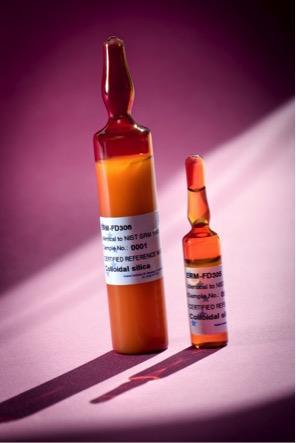
The two certified reference materials may contribute to the REACH classification of nanoforms, as zeta potential is an essential physicochemical parameter for the characterisation of nanoforms.
The Joint Research Centre (JRC) of the European Commission (EC), in collaboration with the U.S. National Institute of Standards and Technology (NIST), produced its first Certified Reference Materials (CRM) for electrophoretic mobility and zeta potential measurements by electrophoretic light scattering (ELS).
Zeta potential is regarded as the most important characteristic to predict the stability of a dispersion of particles, i.e. whether particles stay dispersed or whether they aggregate and/or agglomerate. This makes zeta potential a crucial parameter to assess the suitability of a nanomaterial for a specific purpose.
Zeta potential is calculated from the electrophoretic mobility of a material. Currently, two methods are mainly used, namely electrophoretic light scattering (ELS) and electroacoustics.
Despite the widespread use of these methods, no reference materials allowing traceable calibration of acoustophoretic instruments are currently available and there is also a lack of negatively charged reference materials (only the positively charged NIST SRM 1980 is available) to assess the measurement accuracy of electrophoretic light scattering instruments.
Two colloidal silica based certified reference materials for electrophoretic mobility/zeta potential measurements were developed for both ELS and electroacoustics. This work was a joint effort between JRC and NIST that was initiated through the ISO Technical Committee for Particle Characterisation (ISO/TC24/SC4) at the request of industry. Both institutions jointly release the CRMs.
The first CRM (ERM-FD305/SRM 1992), developed for electrophoretic light scattering methods, was produced at a suitable particle concentration for optical-based instruments and for use as a quality control material.
The same colloidal material at a higher concentration (ERM-FD306/SRM 1993) was produced for electroacoustic methods to be used as a calibration standard to convert the measured signal to zeta potential.
The CRMs were processed and certified in accordance with ISO 17034:2016 and ISO Guide 35:2017. Details about material sampling, processing, characterization and certification are described in the certification reports, available together with the certificate in our online catalogue:
Related Content
Details
- Publication date
- 21 December 2020
